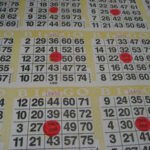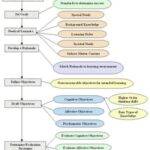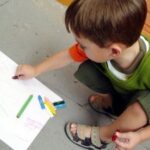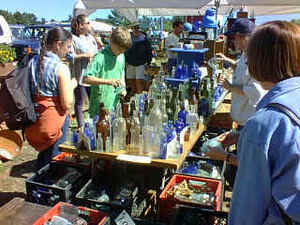Concept: Farm/Farm Animals
Music Concepts: Rhythm and Singing
Objectives
Students will learn to clap a rhythm pattern that grows in length.
Students will learn to sing the song “BINGO”.
Materials Needed
Recording of “BINGO” by Greg and Steve (other versions will work as well)
Pictures of a farmer and dog
Dog puppet (optional)
Chart: Letters and Hands for clapping rhythm
Pointer (optional)
Procedures
1. Tell the class that “We are going to learn a song about a dog named BINGO.
2. Write the word “BINGO” on the chalkboard.
3. Have the class read each letter aloud.
4. Play the recording for the class and just have them listen to the song. Point to each letter in the word, as it is sung. Note: each time the song is sung, another letter (starting with B) is replaced by clapping hands.
5. Play the song again and have the children clap on the missing letters as they are omitted. Help them by drawing hands in place of the omitted letters on the chart and pointing to those as they should clap. Also, you can tell the class to clap every time they hear the dog bark (this is why the Greg and Steve version works well). You could even have the the children use dog hand puppets that they make to pretend to bark in place of clapping as a follow up to the clapping part of the lesson. The sequence pattern is show below.
B I N G O
/ I N G O
/ / N G O
/ / / G O
/ / / / O
6. Notice the rhythm is not a steady beat. The letters “B” and “I” occur at a slower beat than the letters “N”, “G”, and “O” creating a rhythm pattern that children must learn to clap.
7. Practice with and without the recording.
8. Teach the class to sing the song slowly without the recording. Concentrate on clapping (and not singing) letters to be left out. Have the children repeat the lines of song after you.
9. Indicator of Success: Try singing and clapping the song with the recording. Praise the students by commenting on how well the rhythm was clapped and the melody was sung. Allow children to take turns pointing to letters/hands on the chart with the song.
Follow Up Activities
Music: Develop another lesson for learning about farm/farm animals. Play a recording or sing “Old McDonald Had a Farm”. You can have the children hold up corresponding puppets for each animal and have that child make the sound that particular animal makes. Then, have all the children sing along together.
Arts & Crafts: The children can participate in making farm animal puppets, collages of farm animals, junk art animal creations, and/or painting/drawing favorite farm animals.
Cooking/Snack: You may want to serve animal cookies or crackers for snack or make People Puppy Chow. Recipe for puppy chow: Corn/Rice/Wheat Chex cereal, powdered sugar, and chocolate chips. Melt the chocolate and pour over the cereal. Then add the sugar and stir. Enjoy!
Science: You could have the children experience some farm traditions such as growing seeds or hatching chicken eggs.
Social Studies: Show a video about the farm or farm animals. Have a special visitor (farmer) come in to talk with the class, possibly he/she could bring an animal.
Math: Make dogs with numbers and bones with dots. Have the children match corresponding dogs and bones. Provide different types of animals and use them for counting, sorting, and/or sequencing.
Movement: Sing and dance to “The Farmer in the Dell”. Play Animal Charades or Barnyard. Directions for Barnyard: tell each child which animals they will be, whisper in their ears. You should assign at least 2 children to be the same animal (i.e., 2 chickens, 2 pigs, 2 horses, 2 cats, 2 lambs, 2 dogs, 2 ducks, 2 cows, etc.) One person should be assigned to be the rooster. The rooster turns out the lights and tells the animals to go to sleep. The animals find a place around the room and pretend to go to sleep. When the lights come on and the rooster crows, the animals begin to move around looking for their family (animals that are the same as them). They do this be walking like their animal and making their animal’s sound. They can not talk at all.
Field Trip: Go to a local farm or petting zoo.
Dramatic Play: Set out props/clothing for a farmer/farm play. Make animal masks and puppets. Put on a puppet show.
Language Arts: Read a variety of children’s books about the farm and farm animals. Use a flannel board to make the stories visual as well.





